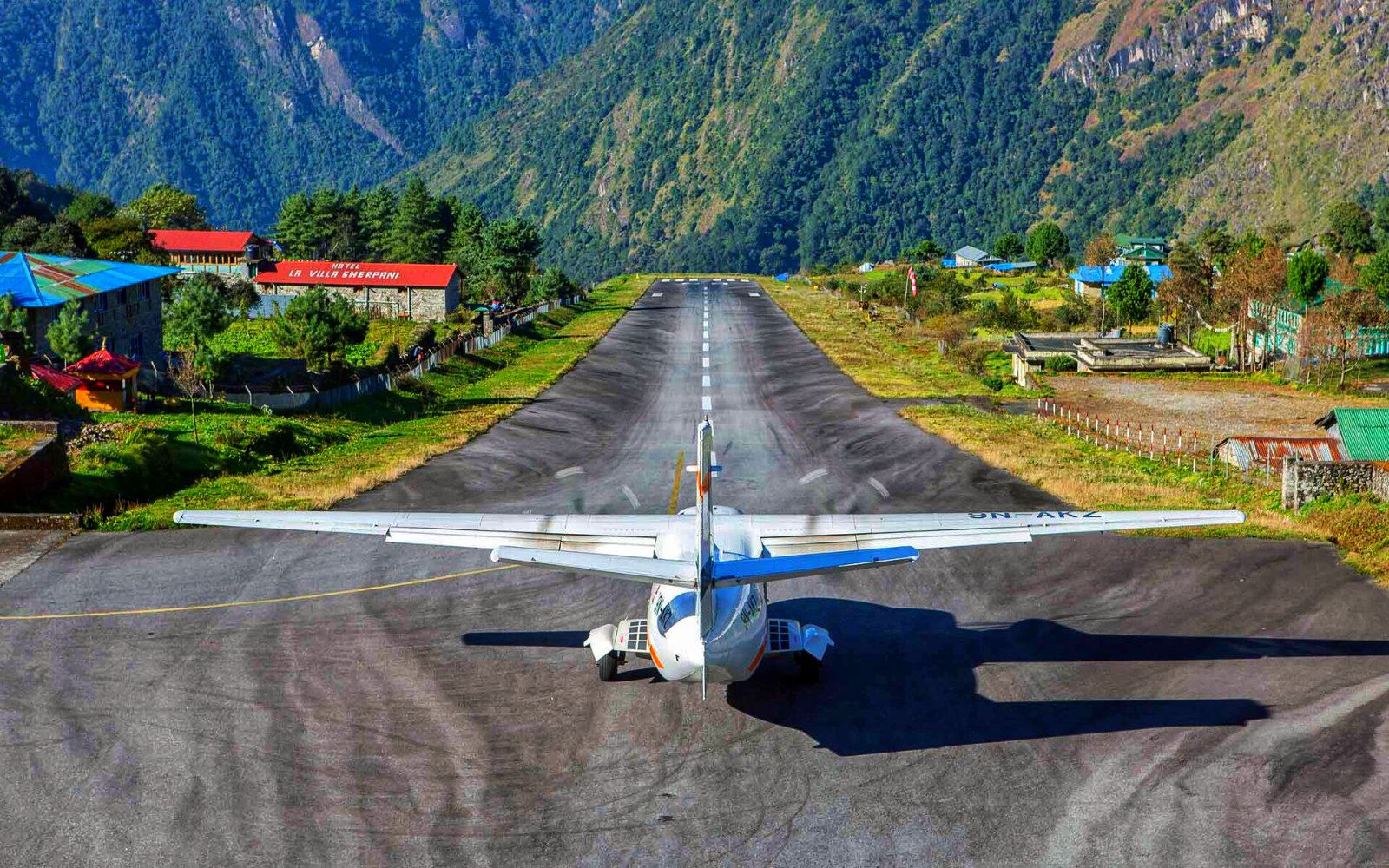
The Kathmandu-Lukla flight commences at Tribhuvan International Airport in Nepal’s capital, Kathmandu. The prelude to an unforgettable journey, the city pulsates with a blend of history, culture, and chaos. Yet, within minutes of ascending, the urban landscape yields to Nepal’s untouched hinterlands. Rolling hills, terraced farms, and remote villages pass by as the aircraft pierces the clouded sky.
The Tenzing-Hillary Airport at Lukla, where the flight culminates, is renowned worldwide for its challenging location. Nestled precariously on a mountainside at 2,860 meters above sea level, it’s frequently touted as the world’s most dangerous airport. However, seasoned pilots with expert navigational skills ensure a safe arrival and departure.
Despite the brief duration—around 40 minutes—the Kathmandu-Lukla flight reveals a vivid tableau of the Himalayas. As the Dornier or Twin Otter aircraft rises above the emerald valleys, the vista opens to unveil snow-capped giants like Gaurishankar, Melungtse, and Cho Oyu. When the weather is clear, passengers are treated to the awe-inspiring sight of Mount Everest, the world’s highest peak.
The experience aboard is no less thrilling. The flight is often filled with adventurers from around the globe, their palpable excitement permeating the small cabin. The aircraft’s low altitude allows for spectacular views, and the feeling of proximity to the towering peaks is indeed exhilarating. However, due to the region’s unpredictable weather, delays and cancellations are not uncommon, contributing to the flight’s adventurous reputation.
The Kathmandu-Lukla flight, despite the inherent challenges, remains the most efficient way to access the Everest region. Beyond its functional role, the flight weaves an exciting narrative of anticipation and adventure. It’s a soaring transition, lifting passengers from the urban sprawl of Kathmandu to the remote, rugged beauty of Lukla